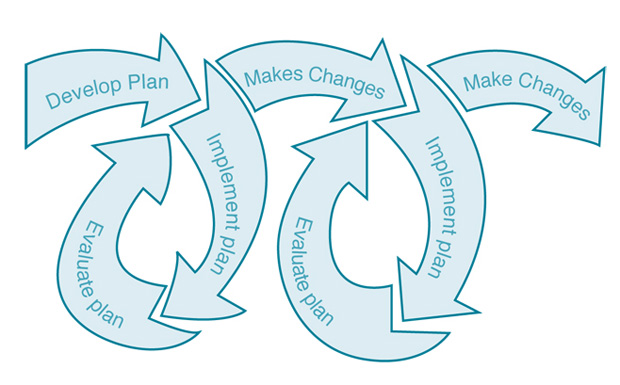7.2 Watershed Management Plans
A watershed planning approach is a flexible framework for managing water resource quality and quantity within a specific drainage area, or watershed. The approach includes stakeholder involvement and management actions that are supported by sound science and technology. The watershed planning process works within this framework by drawing on a series of collaborative, iterative steps to characterize existing conditions, identify and prioritize problems, define management objectives, develop protection or remediation strategies, and implement and adapt selected actions when necessary. The outcome of this process is a watershed plan, which is a strategy that assesses the state of a watershed and presents detailed management information in terms of analyses, actions, participants and resources required for developing and implementing the plan. Using a watershed approach is considered beneficial because it addresses problems within a watershed in a holistic manner and actively involves stakeholders in identifying management strategies.4
BC has no formal requirements or stipulations for undertaking watershed planning processes beyond the provisions under the Water Act to develop a WMP, with approval from the provincial government. There is no standard template to follow. Nonetheless, many communities across the province have taken the initiative to complete watershed management plans by developing their own approach to address key concerns in their respective watersheds.
Characteristics, Benefits and Applications
Every watershed is unique in terms of its features, and every watershed planning process is unique in terms of the issues being addressed and the people involved. Across the province, watershed management plans take different names and different forms, including watershed strategies, watershed blueprints, watershed recovery plans and water use management plans. Despite these differences, several traits are shared by most watershed planning processes. Typically, watershed planning is:
- an iterative and adaptive process;
- a holistic process;
- geographically defined;
- integrated with other planning processes; and
- a collaborative and participatory process.4
Conversations with local governments and BC communities suggest that many critical factors work together to enable a watershed-based approach to planning. These include:
- a burning issue within the watershed that demands attention (e.g., water health issue, community conflict);
- an awareness and recognition of the importance of watersheds
- an understanding of a variety of planning issues;
- a political will that aligns with staff capacity and commitment;
- a willingness to work with neighbouring municipalities in shared watersheds (where appropriate);
- a designated body to coordinate the effort (e.g., Regional District, Okanagan Basin Water Board), with funding from participating municipalities;
- a strong stewardship ethic within the community; and
- a watershed that is at a scale that is practical and reasonable to work with.
Key Elements and Steps
There is no absolute template to follow for watershed planning. Every planning process and every plan is different. However, many elements are critical to the success of watershed plans. Recommended guidelines for watershed planning processes include the following: 5
- develop a clear vision, goals, objectives and action items;
- seek political endorsement. The relevant decision makers must be willing to consider implementing the plan;
- ensure full representation of all affected parties, while keeping the size of the process workable;
- ensure that the planning process is understood, used and broadly supported;
- provide access to appropriate technical and analytical skills and information resources;
- obtain sustainable funding;
- ensure planning is done before further development activities (e.g. urban development) will undermine the effectiveness of the plan;
- factor in the impacts on future water inflows and recharge of climate change and activities and physical works that intercept water (e.g., farm dams and forestry);
- include inputs from socio-economic analyses and incorporate consultation to improve the quality of decisions and build community confidence in the fairness of outcomes;
- ensure that the values and interests of indigenous peoples are considered;
- develop capacity for learning and improving plans over time and the ability to evaluate the process;
- provide adequate resources to develop and implement water plans and evaluate their outcomes; and,
- improve monitoring and compliance of water use.
Ideally, watershed plans and the organizations involved in implementing the plans should emerge from the planning process with:
- improved understanding of the watershed and how it functions;
- clear objectives of how to manage the watershed sustainably and in an integrated manner;
- clearly specified community and environmental outcomes;
- decisions that are based on the best available information;
- adequately resourced management and implementation; and
- good integration with other regional and resource-based plans. 5
It should be acknowledged that many of these elements, steps and outcomes could also support or strengthen any and all of the other planning processes profiled within this guide.
Because of the complexity of watersheds, including the diversity of interconnections and dynamic change over time, an iterative process is recommended for watershed management planning. The following figure from the U.S. Environmental Protection Agency illustrates this (Figure 3).

Figure 3. Diagram of the Watershed Planning Process.4
Back to top
READ MORE ABOUT:
INTERGRATING WATER, LAND AND WATERSHEDS
|


